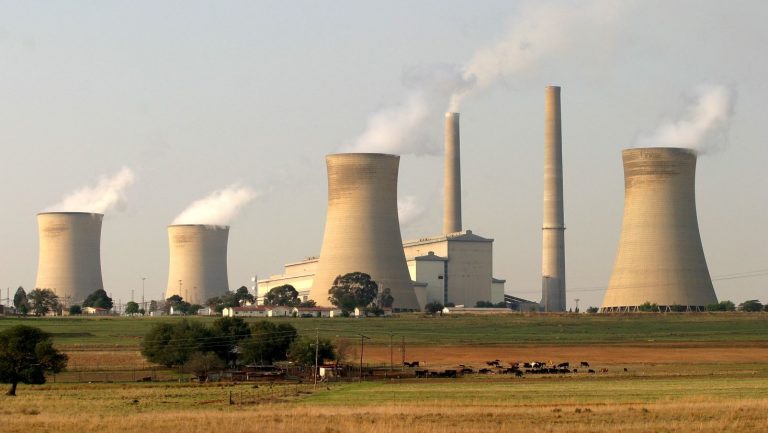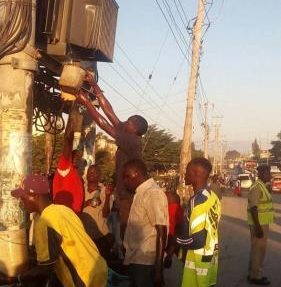Power system stable but constrained: Eskom to add 2 550MW ahead of cold week
Friday, 06 June 2025: The power system remains stable and continues to demonstrate resilience. While system constraints are occasionally experienced, adequate emergency reserves are in place and are being strategically deployed to support demand during the morning and evening peak periods, particularly as the country prepares for a forecasted cold spell in the coming week.
Eskom is making steady progress as we move beyond the peak maintenance season, with the Planned Capability Loss Factor (PCLF) having decreased from last week’s average of ~4 883MW to this week’s (30 May to 5 June) average of ~4 035MW. As a result, the Energy Availability Factor (EAF) has been recovering as expected, now fluctuating between 61% and 64% since Monday. Month-to-date, the EAF stands at 60.42%, reflecting the successful return of additional generation units from planned maintenance.
For the financial year-to-date, planned maintenance has averaged 5 974MW, representing 12.76% of total generation capacity. This reflects a decrease from the previous week, but a 2.1% increase compared to the same period last year.
We plan to return a total of 2 550MW of generation capacity to service ahead of the evening peak on Monday, 9 June 2025, to further stabilise the grid.
The Unplanned Capacity Loss Factor (UCLF), which measures the capacity lost due to unplanned outages, stands at 28.93% for the financial year to date (1 April to 5 June 2025). This represents a slight increase of ~0.8% compared to 28.17% recorded over the same period last year.
The increase in the UCLF this week includes the delay in returning the 800MW from Medupi Unit 4, which is in the final stages of a long-term recovery project following Generator damages in August 2021. Commissioning activities are currently underway and Grid Code compliance testing is expected to resume in the coming week. The unit is anticipated to return to service within June 2025.
The Open-Cycle Gas Turbine (OCGT) load factor decreased to 6.31% this week, compared to 12.70% in the previous week (23 to 29 May 2025). This decline indicates reduced reliance on diesel.
The financial year-to-date OCGT load factor reflects a 5.2% decrease compared to the year-to-date figure from the previous week. The diesel expenditure is still within budget for the current financial year.
Diesel usage is expected to decline further as more units return from long-term repairs and maintenance activities are reduced, increasing available generation capacity.
The Winter Outlook, published on 5 May 2025, covering the period ending 31 August 2025, remains valid. It indicates that loadshedding will not be necessary if unplanned outages stay below 13 000MW. If outages rise to 15 000MW, loadshedding would be limited to a maximum of 21 days out of 153 days and restricted to Stage 2.
Key Performance Highlights:
- From 30 May to 5 June 2025, unplanned outages averaged 14 644MW, representing an increase of 2 315MW compared to the same period last year and 1 644MW above our base case of 13 000MW. For the financial year to date, average unplanned outages stand at 13 760MW. The increase in unplanned outages is largely driven by outage slips. Notably, this week’s higher unplanned outages include the 800MW delay in returning Medupi Unit 4, which is coming from a long-term recovery project.
- As of today, unplanned outages amount to 13 855MW, while the available generation capacity stands at 28 875MW (excluding the 720MW capacity generated by Kusile Unit 6). Tonight’s peak demand is projected to reach 28 344MW.
- While the month-to-date Energy Availability Factor (EAF) has reached 60.42%, the year-to-date EAF currently stands at 57.85%, a 2.82% decline compared to 60.67% over the same period last year. This decrease is primarily attributed to a 2.1% increase in planned maintenance year-on-year. The EAF excludes the 720MW from Kusile Unit 6, which is still progressing toward commercial operation but is already contributing to national grid capacity.
- Year-to-date, Eskom spent approximately R3.76 billion on fuel for the OCGT fleet, generating 631.52GWh. This is higher than the 246.91GWh generated during the same period last year.
- The year-to-date OCGT load factor stands at 11.68%, representing a 2.02% decrease from the previous week. However, this is higher than the 4.57% recorded during the same period last year.
Protect transformers this winter – avoid illegal connections and prevent power failures
While loadshedding remains suspended and electricity demand continues to rise during the winter period, Eskom urges the public to avoid illegal connections and energy theft. These activities often lead to transformer overloads, equipment failures, and in some cases, explosions and extended outages, prompting the need for load reduction to protect the network. To help maintain a stable electricity supply this winter, customers are encouraged to purchase electricity only from Eskom-accredited vendors and take responsibility by regularising their electricity usage.
Eligible households are encouraged to register for free basic electricity with their local municipalities.
Any illegal activity impacting Eskom’s infrastructure should be reported to the Eskom Crime Line at 0800 112 722 or via WhatsApp on 081 333 3323.
Eskom encourages all South Africans to use electricity efficiently throughout the winter season. To help manage household electricity consumption, Eskom customers are encouraged to use the Eskom Residential Calculator, a convenient tool for tracking and optimizing energy usage: https://www.eskom.co.za/distribution/residential-calculator/
Eskom will provide an update on Friday, 13 June 2025, or promptly communicate any significant changes as soon as they occur.
ENDS







